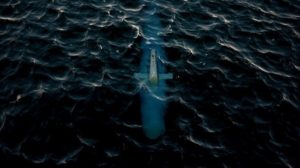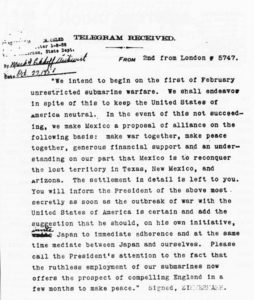This article was first published in The Maritime Executive, to whom we offer our thanks for permission to reprint it.

Submarine cables and the internet traffic they carry, including as much as 99 percent of international telecommunications data, have been a focus area for government officials in recent months. In June 2018, the U.S. Treasury Department sanctioned entities supporting Russia’s “underwater capabilities,” citing concerns of Russian activity “tracking undersea communication cables.” The sanctions shortly followed the re-establishment of a NATO command post tracking Russian submarines in December 2017, prompted by the same concerns of Russian activity near submarine cables.
Australian officials have sounded similar alarms regarding control of submarine cables. Recently, the head of the Australian Secret Intelligence Service (ASIS) directly intervened in negotiations to prevent Chinese firm Huawei from receiving a contract to lay cable providing internet to the Solomon Islands, citing Chinese ownership of a cable connected to Australia’s network infrastructure as an unacceptable cybersecurity risk. Ultimately, in a deal finalized in June 2018, Australia agreed to cover two thirds of the construction costs using foreign aid funds to ensure an Australian firm received the award.
Despite security apprehensions regarding submarine cables, attempts to interfere with their infrastructure are blunted by a number of factors. For example, clandestinely intercepting data on cables would likely be impeded by physical constraints, network operators’ ability to monitor for atypical activity and an inability to make use of intercepted data, as nearly three quarters of internet traffic is encrypted in transit.
Cable breaks are a relatively common occurrence today, and as many as 100 breaks occur per year on average; two thirds of which are the result of accidents involving commercial vessels. A more realistic threat is disrupting internet access by intentionally severing the cables. While some officials have warned that such attacks could “immediately and potentially catastrophically” impact the economy, redundant infrastructure would also limit the effects of these accidents and attacks.
There are instances in which cable breaks can have out sized impacts, including incidents of simultaneous cable breaks or breaks within regions lacking redundant infrastructure. In 2006, an earthquake simultaneously severed eight cables off the coast of Taiwan, resulting in the loss of 90 percent of the data traffic between China, the U.S. and Europe. Similarly, in an incident in 2008, two cables carrying 90 percent of internet traffic through the Suez Canal were broken, obstructing internet access for 75 million people across North Africa, the Middle East and South Asia.
Given the global nature of the maritime industry, and the need for offices and shore-side IT infrastructure, maritime organisations may be particularly vulnerable to disruptions of limited infrastructure serving isolated regions. While private sector organisations may have little control over nation-state activities targeting submarine cables, they can factor disruptive risks stemming from cable breaks, intentional or accidental, into decisions regarding the IT infrastructure used at sites around the world.
To mitigate the impact of submarine cable breaks, companies can conduct assessments with their network carriers to identify sites in regions that lack cable redundancy. To prevent any incidents from occurring, companies can lease more fibre, engage with a separate ISP for backup or ensure critical data at sites without redundant connectivity are backed-up at facilities in other regions.
Jacob Styczynski is an Analyst at Booz Allen Hamilton.
The opinions expressed herein are the author’s and not necessarily those of The Maritime Executive. https://www.maritime-executive.com
TMT Postscript: The history of intercepting communications by way of undersea cables has often featured a story about Britain cutting and then intercepting the infamous German Zimmermann telegram of early 1917. The German Government sent a telegram to Mexico via the German embassy in the US saying that it was going to begin the use of unrestricted warfare in the form of submarine attacks and that Mexico should declare war on the US to distract it from assisting the Allies. In return, the Mexicans would get financial assistance and many other benefits including the return of its territories lost to the US.

The notion of such a declaration was of course extraordinary and it is unlikely that anyone in Mexico would have believed it, but the mere existence of the telegram was enough for the British to get the US to get off the fence and come into the First War on the side of the Allies.
The British had in fact only been able to intercept the message because although the Atlantic cable had indeed been cut, the Germans were in fact using the US diplomatic link from Europe to the US which went via Cornwall. The presentation of the telegram was a problem for the British as they had to firstly explain why they were intercepting US diplomatic communications and also to try to keep the fact that they had cracked the German codes under wraps.

Comments on Mitigating threats to undersea internet infrastructure